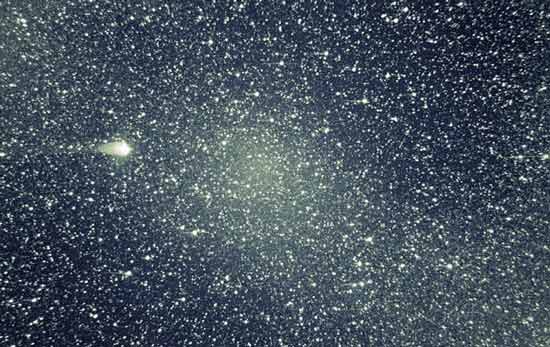
|
Credit & Copyright: H. Fukushima, D. Kinoshita, &
J. Watanabe
(NAOJ)
Explanation:
If you look carefully enough, you can even see
the glow of the
Sun in the opposite direction.
At night this glow is known as
the gegenschein (German for "counter glow"),
and can be seen as a faint glow in an extremely dark sky, as
pictured above.
The gegenschein is sunlight back-scattered off small
dust particles. These
dust particles are millimeter sized splinters from
asteroids and orbit in the
ecliptic plane of the planets.
The gegenschein is distinguished from
zodiacal light by the
high angle of reflection. At day, a phenomenon similar to
the
gegenschien
called the glory can be seen in clouds opposite
the Sun from an airplane.
|
January February March April May June July August September October November December |
| ||||||||||||||||||||||||||||||||||||||||||||||||
NASA Web Site Statements, Warnings, and Disclaimers
NASA Official: Jay Norris. Specific rights apply.
A service of: LHEA at NASA / GSFC
& Michigan Tech. U.
Based on Astronomy Picture
Of the Day
Publications with keywords: Sun - dust - Solar System
Publications with words: Sun - dust - Solar System
See also:
- APOD: 2025 September 14 Á Planets of the Solar System: Tilts and Spins
- APOD: 2025 August 28 Á Galaxies, Stars, and Dust
- APOD: 2025 May 21 Á International Space Station Crosses the Sun
- APOD: 2025 March 31 Á Parker: The Solar System from Near the Sun
- APOD: 2025 March 16 Á Venus and the Triply Ultraviolet Sun
- Young Stars, Dark Nebulae
- APOD: 2024 September 29 Á Seven Dusty Sisters
